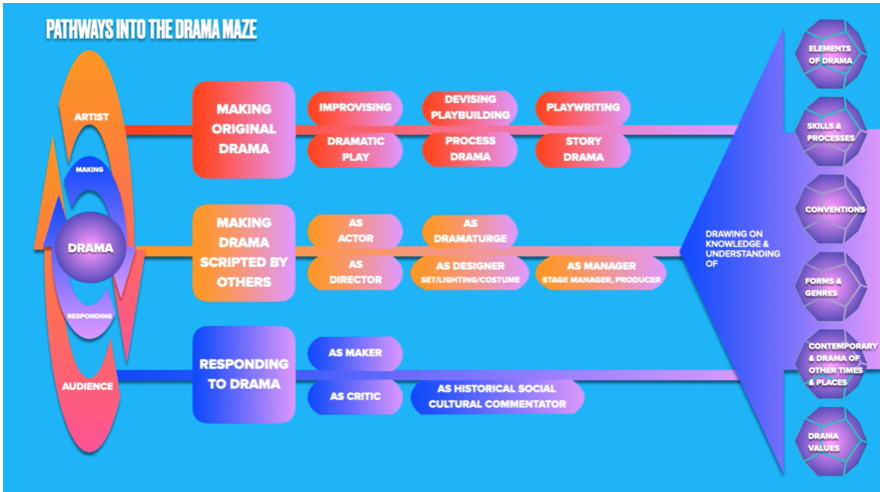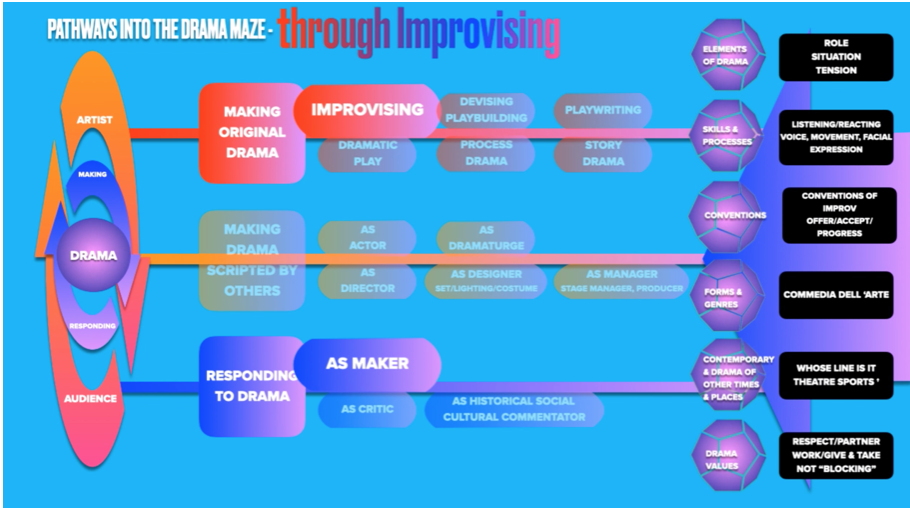Drama Tuesday - Sometimes a picture tells the story
/Some of the recent posts have been text heavy. Sometimes, what is needed is a diagram to tell the story.
There are many different ways of teaching drama – and we need a guide through the maze. Rather than just listing all the different possibilities, can we categorise and organise them to see patterns?
When we teach drama we help our students become artists and audiences. We help them make drama and respond to drama. There are three main pathways that help us organise the many possibilities.
In drama learning and teaching, students
All three pathways depend on students learning some fundamental knowledge and understanding. of the Elements of Drama; skills and processes of making and responding to Drama; Drama Conventions; Drama Forms and Genres; Contemporary Drama in the context of Drama of other times and places; and, Drama Values, the principles and standards of Drama Practice.
Putting that all in one diagram, there is an unfolding picture to guide us.
For example, if we come to Drama teaching and Learning through the lens of Improvising, students are both Making their own drama and Responding to their own drama making. To do so they need to draw from their knowledge and understanding of Drama Elements such as Role, Situation and Tension; they use skills and processes of Listening and reacting, movement and facial expression; the apply the Conventions of Improv. such as offer/accept/progress; they build from a knowledge of improvisationally-based forms such as Commedia Dell’Arte; they also draw on their knowledge of improvising in contemporary theatre practice such as Whose Line Is It; and they practice the values of respecting partners, give and take and “not blocking”.
As a second example, if the entry point is responding and the aim is to help students become informed audiences, responding as critics, then they drama on knowledge of all the Elements of Drama and skills and processes such as listening and watching, categorising information and responses and making connections between experiences; the Drama Conventions of willing suspension of disbelief and the specific conventions used; they bring to the process what they know about the specific forms and genres used in the context of history, society & culture and perspectives of time, continuity and change;. they acknowledge and act on their values of respecting contexts of the drama observed and audience expectations.
Try using this diagram to explore the teaching and learning of different aspects drama.
A diagram is always a shorthand way of saying something. Some people like and read diagrams but others need fuller explanations. What do you prefer to make meaning of the drama teacher experience?
What would you add or take away from this diagram?










